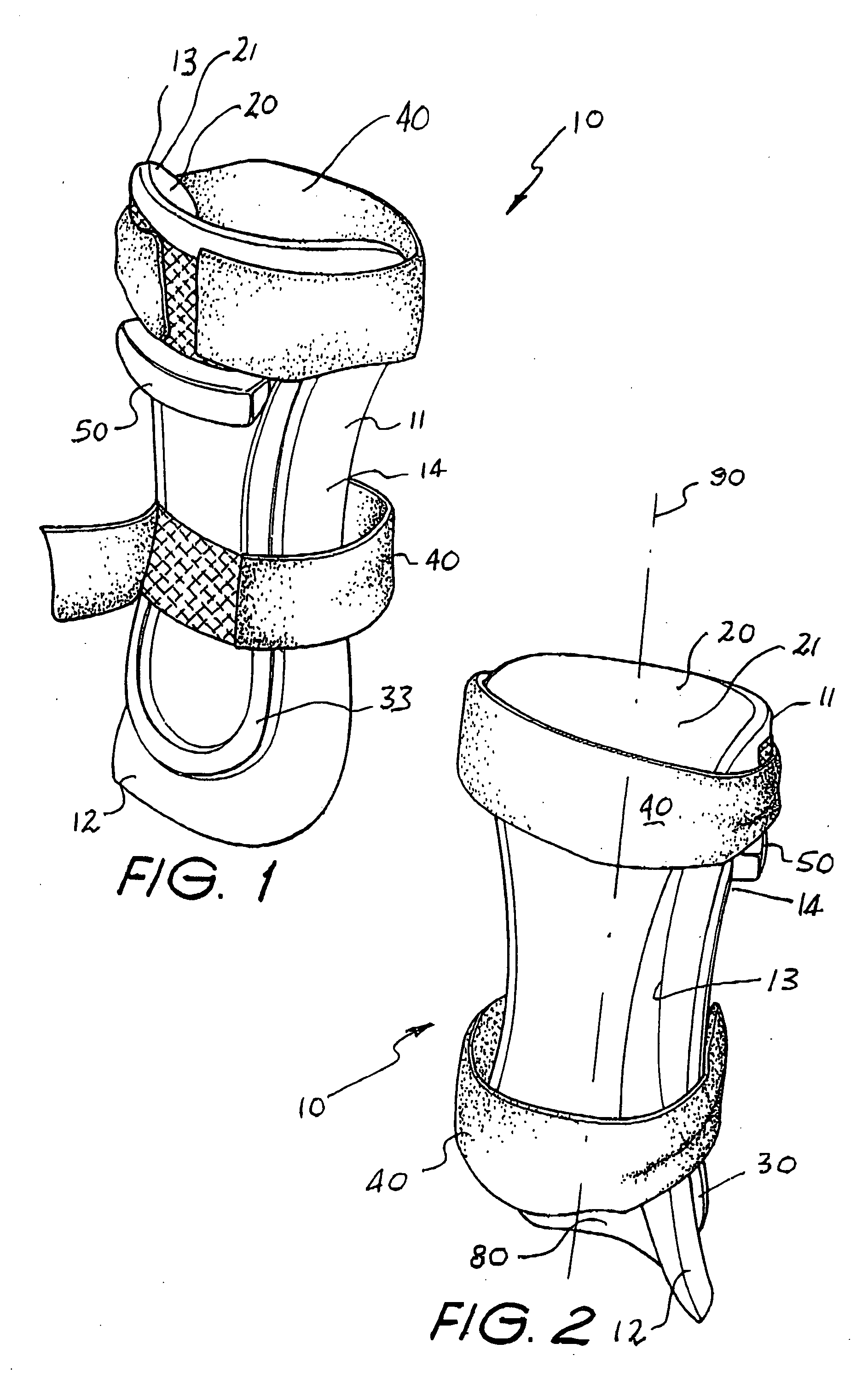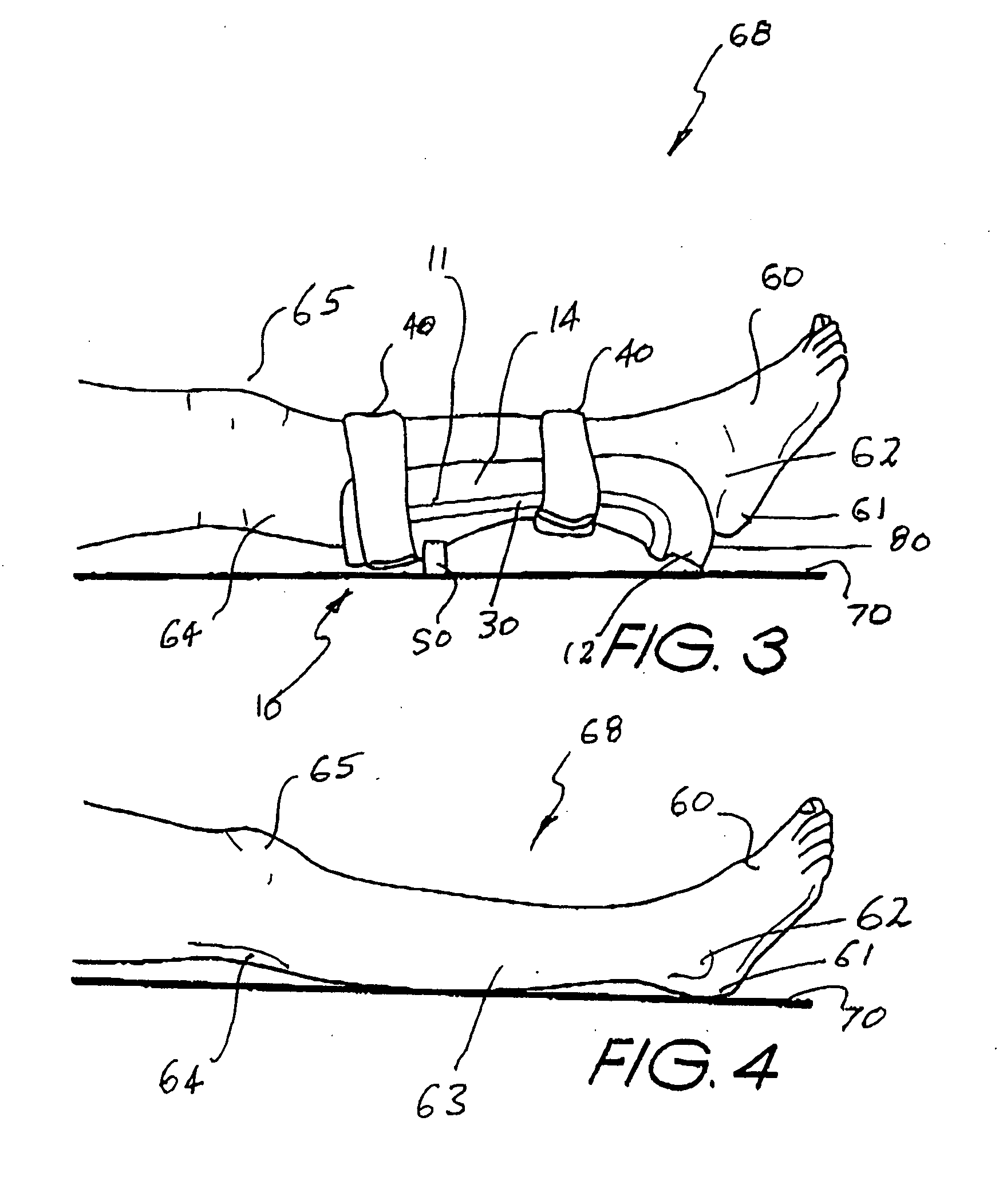Pressure ulcer prosthesis and method for treating and/or preventing pressure ulcers
a pressure ulcer and prosthesis technology, applied in the field of pressure ulcer prosthesis and method for treating and/or preventing pressure ulcers, can solve the problems of diabetic foot ulcers, high risk of developing diabetes foot ulcers, and high risk of peripheral vascular disease,
- Summary
- Abstract
- Description
- Claims
- Application Information
AI Technical Summary
Benefits of technology
Problems solved by technology
Method used
Image
Examples
Embodiment Construction
[0043] The pressure ulcer prosthesis 10 of the preferred embodiment of the present invention comprises an elongate body 11 to support a patient's limb, said body 11 having: a longitudinal axis 90 and a longitudinally extending support surface 13 for the limb, said support surface 13 in transverse cross-section being arcuate and concave; and a distal end 12 with a further surface 80 extending from the support surface 13 so as to diverge from the longitudinal axis 90 such that a portion of the limb adjacent the further surface 80 is relieved from pressure.
[0044] In preferred embodiments, the body 11 in transverse cross-section is arcuate and concave.
[0045] The preferred prosthesis 10 further comprises a liner 20 for lining the support surface 13 of the prosthesis body 11 The liner 20 is preferably formed from a high density foam. Preferably, the liner 20 has substantially the same shape as the support surface 13 of the prosthesis body 11. Of course, where appropriate, a liner surfac...
PUM
 Login to View More
Login to View More Abstract
Description
Claims
Application Information
 Login to View More
Login to View More - R&D
- Intellectual Property
- Life Sciences
- Materials
- Tech Scout
- Unparalleled Data Quality
- Higher Quality Content
- 60% Fewer Hallucinations
Browse by: Latest US Patents, China's latest patents, Technical Efficacy Thesaurus, Application Domain, Technology Topic, Popular Technical Reports.
© 2025 PatSnap. All rights reserved.Legal|Privacy policy|Modern Slavery Act Transparency Statement|Sitemap|About US| Contact US: help@patsnap.com



